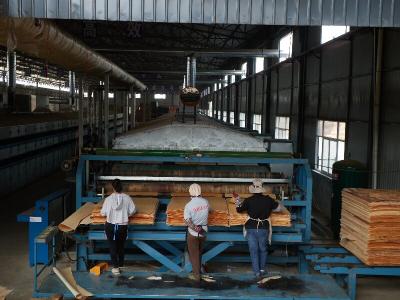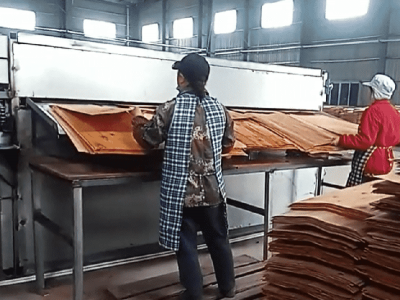The Global Timber Industry in 2025
Building a Sustainable, Tech-Driven Future
Dateline: September 5, 2025 | Byline: A DeepSeek Analysis
The global timber industry, a cornerstone of the world's economy and construction sector, is in the midst of a profound transformation. As we move through 2025, the sector is no longer defined solely by the cyclical patterns of supply and demand but by a powerful convergence of sustainability mandates, technological disruption, and shifting global market dynamics. The industry is proactively shedding its traditional image and repositioning itself as a critical, innovative, and sustainable solution to some of the world's most pressing challenges, from climate change to urban housing shortages.
This year has crystallized several key trends that are reshaping the entire value chain, from forest management to finished construction projects.
1. The Sustainability Imperative: Beyond Certification to Carbon Forestry
The drive toward sustainability has evolved from a niche concern to the central organizing principle of the industry. While certifications like FSC (Forest Stewardship Council) and PEFC (Programme for the Endorsement of Forest Certification) remain crucial for market access, the conversation in 2025 has expanded dramatically into the realm of carbon sequestration and ecosystem services.
Carbon as a Co-Product: Large-scale forest owners and timber investment management organizations (TIMOs) are increasingly generating significant revenue from carbon credit markets. Managed forests are now valued not just for their lumber but for their verified capacity to capture and store atmospheric CO2. This dual-income model incentivizes longer rotation periods and more sustainable silviculture practices, aligning economic interests with ecological benefits.
Transparency and Traceability: Blockchain technology and satellite monitoring have become industry standards. Consumers, regulators, and corporate buyers now demand—and can receive—irrefutable proof of a wood product's origin. This "seed-to-site" traceability is effectively shutting down markets for illegally logged timber and rewarding responsible producers. Advanced DNA and isotope testing can now pinpoint the exact source of a timber shipment, making fraud nearly impossible.
2. Mass Timber: Reshaping the Construction Skyline
The mass timber revolution continues to accelerate at a pace exceeding even the most optimistic forecasts from just a few years ago. Cross-Laminated Timber (CLT), Glue-Laminated Timber (Glulam), and other engineered wood products are now mainstream materials for mid-rise and even high-rise construction.
Drivers of Growth: The primary drivers are twofold. First, the global push to decarbonize the construction sector, which is a massive contributor to global emissions. Concrete and steel are carbon-intensive, while mass timber is a renewable, carbon-negative alternative. A single cubic meter of CLT stores approximately one tonne of CO2. Second, the speed and efficiency of prefabricated mass timber construction are solving critical path and labor shortage issues on construction sites worldwide.
Innovation in Treatment and Design: 2025 has seen advancements in fire-resistant treatments and coatings, addressing one of the last remaining hesitations among builders and regulators. Architectural design software is now deeply integrated with manufacturing robotics, allowing for incredibly complex and beautiful structures to be designed digitally and then precision-cut in factories with minimal waste.
3. The Digital Forest: Precision Forestry and Industry 4.0
The forests of 2025 are digitally native. The adoption of Industry 4.0 technologies has given rise to the concept of the "Digital Twin"—a virtual, real-time replica of a forest or a manufacturing facility.
In the Forest: Drones equipped with LiDAR and multispectral sensors conduct health surveys, monitor for pests and diseases, and accurately inventory biomass. This data feeds into AI-powered models that can predict growth yields, optimize harvest schedules, and prescribe targeted interventions, reducing the need for blanket herbicide or pesticide use. This precision forestry maximizes yield while minimizing environmental impact.
In the Mill: Smart sawmills are the norm. AI vision systems scan each log in milliseconds, determining the most profitable cutting pattern based on real-time market prices for different lumber dimensions. Robotics handle sorting, stacking, and packaging. This hyper-efficiency drastically reduces waste, with virtually every part of the log—from bark to sawdust—being directed to a value-added product like bioenergy or biochemical extraction. Predictive maintenance on machinery, powered by IoT sensors, minimizes costly downtime.
4. The Bioeconomy Boom: Beyond Lumber
Perhaps the most significant shift is the industry's redefinition from a timber producer to a biomass innovator. The modern biorefinery, often co-located with sawmills, is a hub of circular economy activity.
Value from Waste: What was once considered waste is now a valuable feedstock. Sawdust and chips are converted into biofuels for heating and transportation, biodegradable plastics, and textiles like lyocell. Tall oil, a byproduct of the pulping process, is refined into valuable chemicals, resins, and even food additives. This diversification insulates companies from the volatility of lumber markets and creates new, high-margin revenue streams.
Nanocellulose: This "wonder material," derived from wood pulp, is finding its way into an astonishing array of applications. In 2025, we see its increased use in lightweight automotive composites, flexible electronics, water filtration systems, and advanced medical products like tissue scaffolding and wound dressings.
5. Geopolitical Realignments and Supply Chain Resilience
The geopolitical shocks of the early 2020s forced a massive reevaluation of global supply chains. While global trade remains vital, regionalism has strengthened.
Friend-Shoring and Near-Shoring: Major consuming regions like North America and the European Union are prioritizing secure, politically stable sources of timber. This has benefited suppliers in Canada, the United States, Scandinavia, and Western Europe. Countries like Vietnam and Brazil have also grown their export roles, but with a heightened focus on proving sustainability credentials.
Climate-Adapted Supply Chains: The industry has become more resilient to the impacts of climate change itself. Firebreaks, diversified species planting, and improved water management are now non-negotiable aspects of forest management. Supply chains are more diversified to mitigate the risk of regional disruptions from wildfires, hurricanes, or pest outbreaks like the spruce bark beetle.
Challenges on the Horizon
Despite the optimistic trends, significant challenges remain:
Labor Skilling: The industry requires a new kind of workforce—data analysts, drone operators, robotics technicians, and biomaterial scientists. Attracting this talent and retraining the existing workforce is an ongoing challenge.
Policy and Regulation: Inconsistent international regulations on carbon accounting and sustainability can create trade barriers. The industry is advocating for more harmonized global standards.
Competition for Land: Forests face competing pressures from agriculture, urban expansion, and conservation. Balancing wood production with protecting high conservation value areas and biodiversity remains a delicate act.
Conclusion: A Rooted Industry Reaching New Heights
As 2025 unfolds, the global timber industry stands at a unique crossroads. It is simultaneously one of the world's oldest industries and one of its most modern and innovative. By embracing its role as a manager of the global carbon cycle, a pioneer in advanced manufacturing, and a source of groundbreaking biomaterials, the industry is not just adapting to the future—it is actively building it. The material of the past has decisively become the material of the future, proving that the most sustainable way to build upward may very well be to go back to our roots.





